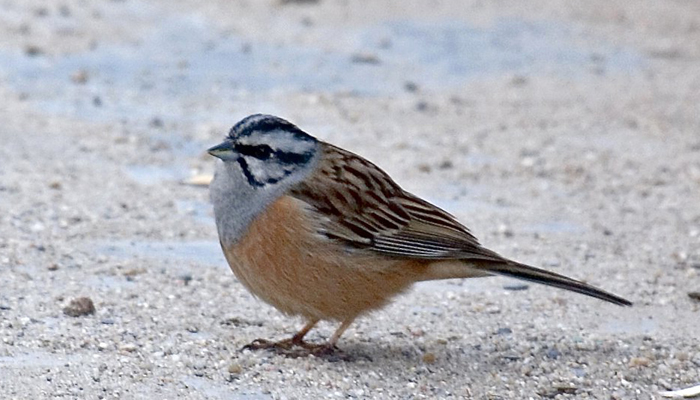
English: Rock Bunting
Russian: Горная овсянка
Mongolian: Цагаанхөмсөгт хөмрөг
German: Zippammer
French: Bruant fou
Japanese: ヒゲホウジロ (Hige-hojiro)
Body
length: 15-16
½ cm.
Breeds on steep, often boulder-strewn or rocky, open mountain slopes
immediately above treeline (often below 1500 m in Europe) with grass and
herbage along with thorn bushes and scattered trees, sometimes in glades and
alpine meadows just below treeline; locally in coastal regions down to
sea-level. Chiefly resident, but in winter usually descends to lower levels.
Not really shy, but unobtrusive and is easily overlooked when ♂ not singing.
Identification:
Fairly big, short-winged but long-tailed. Identified in all plumages by
contrasty head markings, with dark stripes along crown-side, through eye and
framing cheek, combined with ash-grey throat and ash-grey breast (mostly on ♂),
rusty-brown (or on young ♀ orange-buff) belly, white outer tail-corners, and
grey lesser wing-coverts. Lower mandible light lead-grey. Rump unstreaked
red-brown. Sexes similar.
- Adult ♂: Black head markings, whitish supercilium,
unspotted pale lead-grey on throat and breast, and unstreaked flanks.
- Adult ♀:
Occasionally inseparable from ♂ in field, but many can be told by less
extensive grey on breast, light streaking on lower throat, breast and flanks,
and more diffuse head pattern.